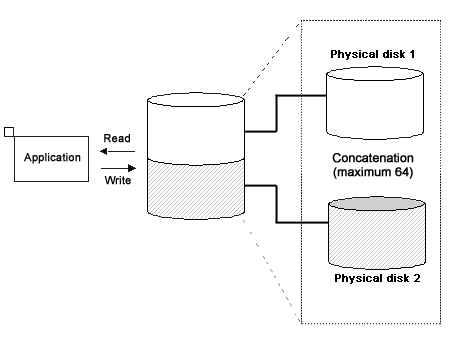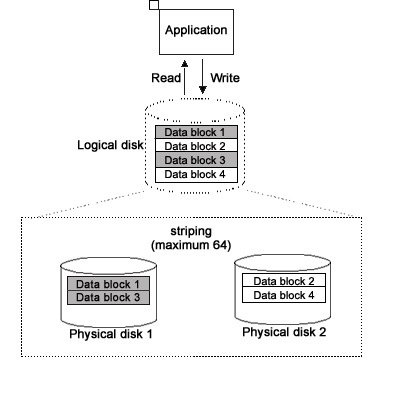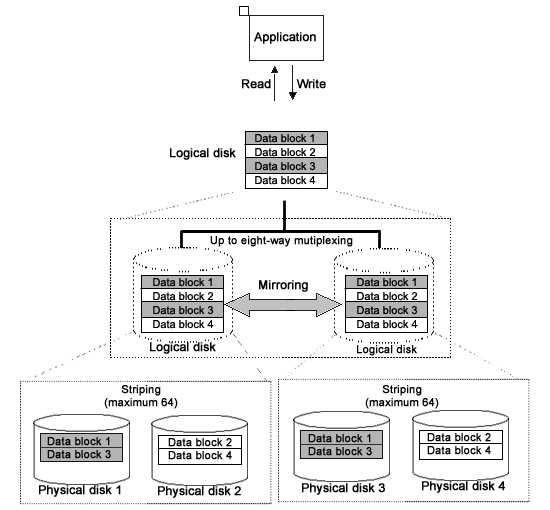In our current SAN environment, the demand for large capacity disk units and the amount I/O data processing is increasing daily.
This sub-section describes the functions that realize flexible disk configuration and I/O load balancing for efficient management of large volumetric data.
Note
Logical partitioning, disk concatenation, and disk striping can be applied to local disks and shared disks. They cannot be applied to system disks.
Logical partitioning divides a physical disk into logical devices based on its original method, and not based on the disk slice management provided by the disk label (partition table).
Physical slice creation by Solaris OS native function is limited to 7 disk slices (physical slices).
GDS allows users to use physical disks and objects equivalent to disks dividing them into a maximum of 1024 logical devices.
For details, see "2.1.4 Logical Volume" and "D.4 sdxvolume - Volume operations."
Disk concatenation combines multiple physical disks to form a single, large logical disk.
By using the disk concatenation function, users are able to configure a large-capacity logical disk device without being restricted to the limitation of one physical disk.
Figure 1.25 Disk Concatenation

Disk striping maps equal-sized data units on multiple disks so that the data is interleaved in sequence among two or more physical disks.
Disk striping function can balance the I/O load by distributing the divided I/O requests to multiple physical disks simultaneously.
You can also stripe concatenated disks.
Figure 1.26 Disk Striping

Concatenation and striping does not provide data redundancy. Since it involves more disks compared to a usual disk configuration, the risk of data loss caused by a disk failure is actually larger.
GDS delivers data redundancy as well as high-capacity storage and I/O load distribution by mirroring concatenated or striped disks. When using concatenation or striping, you are recommended to use mirroring as well.
Figure 1.27 Combining Striping and Mirroring
